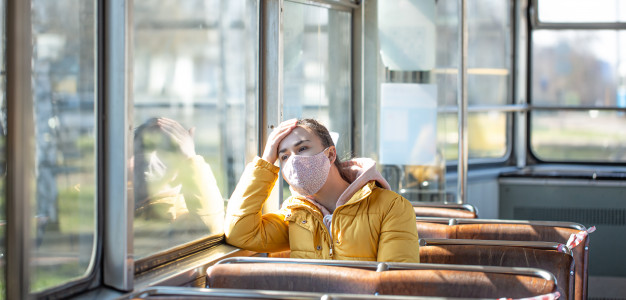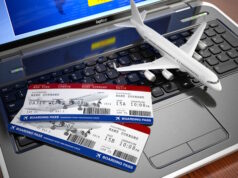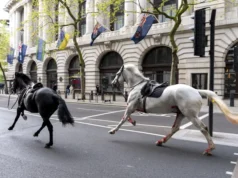
The COVID-19 pandemic has literally “put the brakes” on public transportation. Since stay-at-home orders went into effect earlier this year, ridership on public transit dropped by double-digits in all American cities. Although many states have begun re-opening, more than half of global commuters say they don’t feel safe on buses or trains. On top of health concerns, transit authorities are struggling to deal with the rise in bicycling and the new stay-at-home economy.
Although this situation certainly isn’t pretty, some transportation leaders see it as an opportunity for change. Rather than revive old systems, DOT planners are increasingly open to novel ideas that can help them adapt to the rapidly changing economy. But before we share a few of these exciting opportunities, let’s get a better understanding of the immense challenges public transit faces.
How Bad Has the Pandemic Been for Public Transit?
As you’d expect, fewer people have been hitting the streets during Covid-19, for drivers of personal vehicles as well as public transport users. While this is a net positive for private drivers, resulting in fewer accidents and a breath of fresh air for the environment. Notably, the demand for public transportation worldwide has taken a sizeable monetary hit since the outbreak of COVID-19.
Demand for transit throughout the USA plummeted 72 percent in May, and fare revenues dropped by over 85 percent. Recent data from the organization TransitCenter suggest public transportation in America could lose between $26 – $40 billion next year.
Although these numbers are beginning to increase as states re-open, it’s doubtful ridership will ever return to pre-pandemic levels. Of course, a significant reason for this drop in demand is the rise in telework.
Researchers at Stanford University now estimate 42 percent of American employees are working from home. And it doesn’t appear the work-from-home trend will diminish after we get a COVID-19 vaccine. In fact, many high-profile companies like Twitter are now letting their employees work from home indefinitely. Recent surveys also suggest 50 percent of American employees prefer working virtually versus in an office setting.
Yet another financial burden affecting public transit has to do with the CDC’s health guidelines. To create a safe environment for riders, transportation departments have to invest more money into materials like hand sanitizers and plexiglass dividers. Transportation departments in Las Vegas and NYC are testing costly air purification machines.
In addition to these increased sanitization measures, buses and trains must also comply with social distancing guidelines. For instance, 40-foot buses in Houston can now only carry about 16 people at a time. Due to these strict standards, transit authorities often send out extra buses to ensure everyone has access to public transportation—which inevitably drives up costs.
The “Bicycle Bonanza” Spells Trouble for Buses
Another significant threat to public transportation is the growing interest in micro-mobility. During the COVID-19 pandemic, more Americans than ever have been using bicycles to get around town. In fact, recent data from NPD Group found that sales of affordable leisure bikes went up 121 percent compared to March of last year. In many cities, it’s impossible to get your hands on a bicycle under $1,000.
To accommodate this surge in cyclists, many cities are now experimenting with “Slow Streets” programs that limit car traffic on select roads. Some cities that already have bike-share programs (e.g., Chicago’s Divvy bikes) are increasing the number of available vehicles. A few city leaders have even discussed making these car-free streets a permanent fixture of their urban design.
How Could Public Transit Survive? – A Few Noteworthy Strategies
While few analysts suggest public transportation will go extinct, authorities have to make significant changes as they adapt to the “new normal.” Indeed, many transportation leaders have pointed out they need to think of creative ways to streamline services.
One city that has been at the forefront of this transportation innovation is Jacksonville. For instance, Florida’s largest city recently unveiled an on-demand shuttle service called ReadiRide. Instead of relying on costly bus services, Jacksonville’s residents can now schedule shuttles ahead of time Mondays through Saturdays from 6 AM – 7 PM. These on-demand services will most likely become the new normal as cities search for cheaper and safer transportation alternatives.
In addition to on-demand shuttle services, some American cities are now working with ride-share companies to offer residents more options. For instance, the City of Miami recently partnered with Uber and Lyft to cut back on its transport expenses. Instead of scheduling big buses to drive around the city at night, Miami residents can now use ride-share vouchers to get wherever they need to go.
But perhaps the most exciting change coming to public transit is an increase in autonomous vehicles. Despite the COVID-19 pandemic, cities like Jacksonville and Tampa are pushing ahead with fixed-route driverless shuttles.
Despite Fewer Riders, Public Transit Will Move Forward
In the post-COVID world, you’ll probably see fewer buses and more bicycles. That doesn’t mean, however, that public transit is dead. Indeed, TransitCenter revealed polls that suggested many Americans would pay more to use public transit in the wake of COVID-19.
Although nobody knows precisely how public transportation will look in the future, most experts believe it will “blend” into other industries like ride-hailing.












